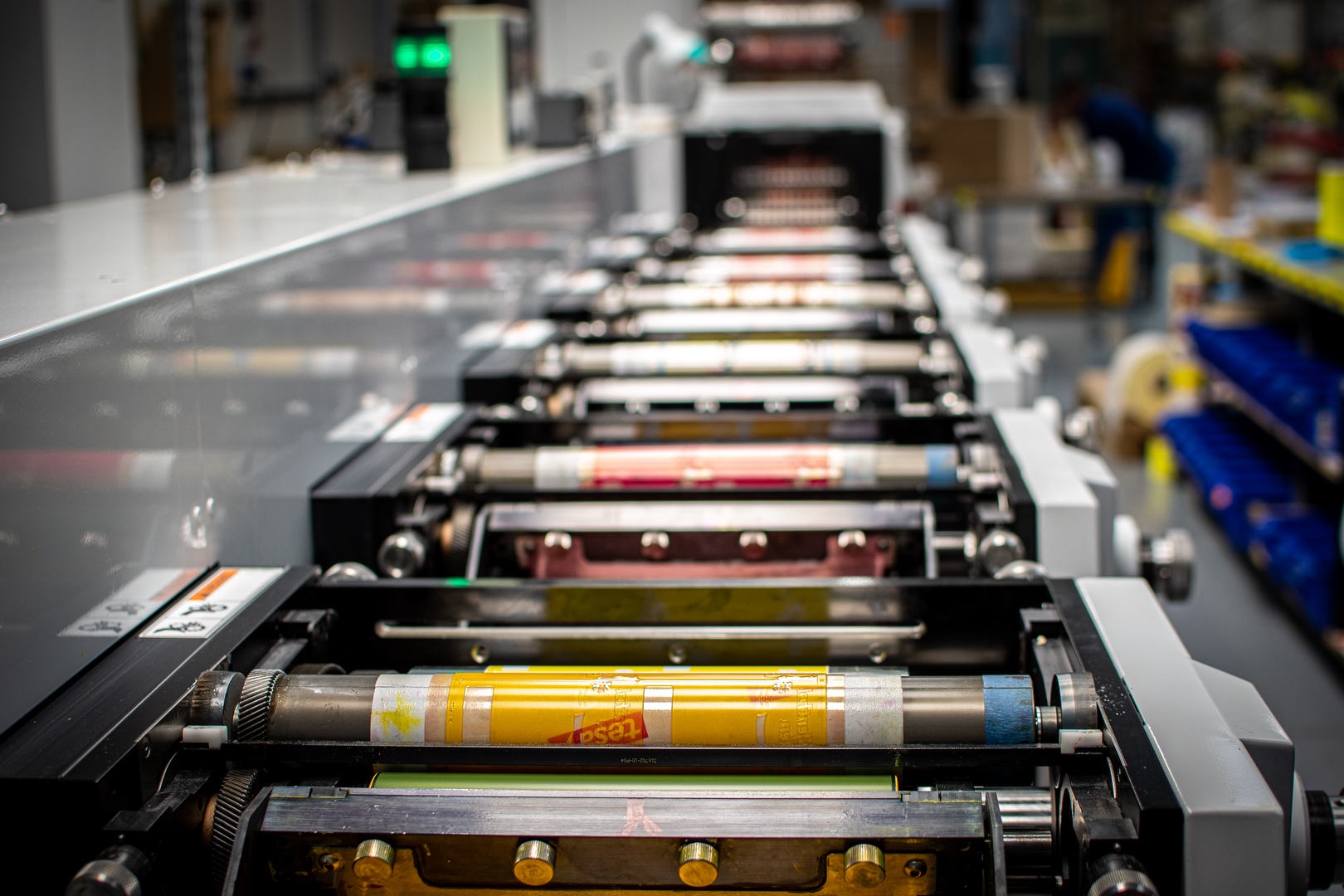wp-migrate-db domain was triggered too early. This is usually an indicator for some code in the plugin or theme running too early. Translations should be loaded at the init action or later. Please see Debugging in WordPress for more information. (This message was added in version 6.7.0.) in /var/www/clients/client16/web55/web/wp-includes/functions.php on line 6121
Our production technologies are ready to translate even the most complex label into reality.
Colors are applied using a relief printing plate onto the printing material, where they are subsequently dried using UV lamps. The advantage of flexographic printing is the ability to handle large print runs and, at the same time, embellish labels with a series of finishing operations in a single production process, such as embossing, lamination, print on adhesive, and more.
Learn more:Full-color printing allows for the reproduction of even the smallest graphic details, with fine gradient screening or small negative fonts. It is a clear alternative for long print runs compared to digital offset printing.
Learn more:UV Screen Printing is primarily used in combination with other technologies. It is a transfer printing method, meaning that the ink used for printing is pushed through a printing screen. This printing technique allows for the transfer of a thick layer of ink while ensuring perfect coverage.
Learn more:Hot stamping adds a touch of exclusivity to labels and achieves even higher-quality effects in glossy or matte variations and various color shades. The result is often very striking, rich in detail, and is frequently used on various high-end products. This technology can also ensure product originality or brand protection.
Mauris porta consequat lorem, a iaculis ipsum tempor eget. Proin pharetra dolor ut orci volutpat finibus.
Cold foil stamping is a simpler alternative to hot foil stamping, where adhesive is applied to the surface of the label using flexo or offset printing technology. Subsequently, metallic foil is pressed onto the material's surface and allowed to cure finally by passing through a UV lamp.
Learn more:Embossing or relief stamping is created by pressing the material with two printing forms (negative and positive). This element serves to emphasize graphics and is a suitable complement to hot or cold stamping technologies.
Learn more:Inkjet devices can spray ink onto diverse surfaces and materials, with inks available in various colors. This technology is applied across the entire spectrum of industries, including the engineering, automotive, paper, cable labeling, and food and beverage industries.
Learn more:We own finishing equipment that meets even the most demanding customer requirements. Labels are available in rolls, sheets, or zigzag-folded configurations.
Learn more:Clear or blank labels are most commonly used in logistics, warehouse management, and wherever it is necessary to print variable information such as production dates, expiration dates, barcodes, or variable data from databases.
Learn more:They are also referred to as TTR tapes/foils or ribbons. These are heat-transfer ribbons and are used as the printing medium in thermal transfer printers.ut orci volutpat finibus.
Learn more:we can offer customers flexible and variable production of labels.
Our machines are primarily represented by the American company Mark Andy, which allow printing with eight UV-based colours.
which is suitable for printing Braille, we also offer printing into glue or, on the contrary, its elimination, hot and cold embossing, embossing, printing on the reverse side or technology that allows the production of multi-layer labels, so it is it is possible, for example, to place the necessary text under the graphics, a beautiful top label.
special technological elements that correspond to the latest trends, such as micro-embossing, nano-embossing, embossing, debossing, lamination and varnishing.
Are you pushed by a deadline? We will always do our best to accommodate you. We don't know the word impossible!
Error: Contact form not found.